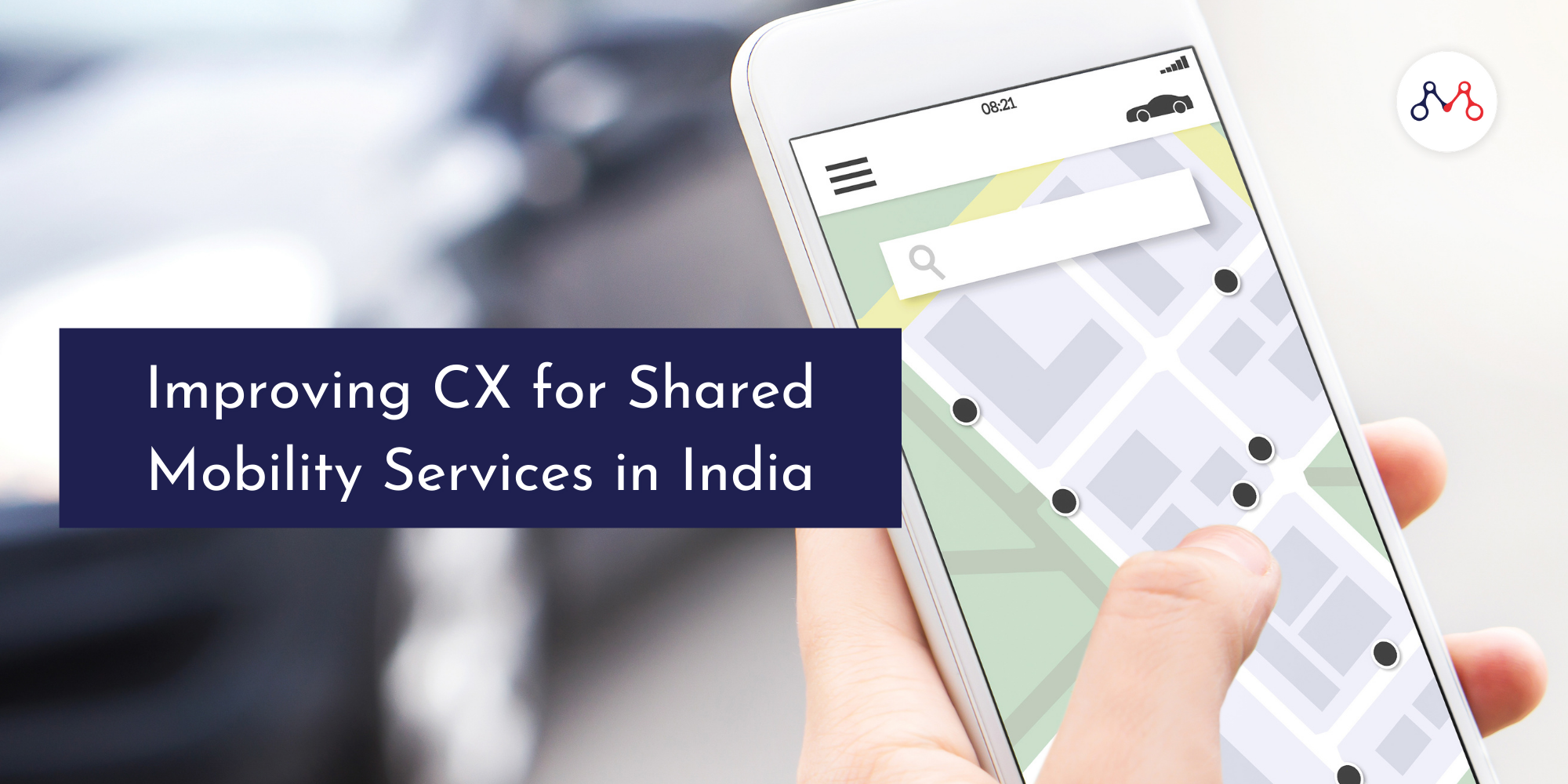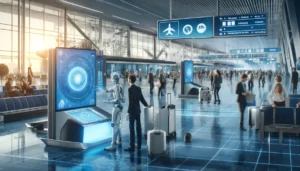
Shared mobility is an umbrella term for companies that enable individuals to access a vehicle as and when they require it.
Shared mobility services like Uber and Ola ushered in a new era of public transportation, which needed to be more active with the use of autos, buses, and metros in urban areas. Dealing with a heavily unionized industry, these companies helped open the ride-sharing provider market.
Before the pandemic, these companies saw enormous markets for their services. However, things hit a slump during 2020, with the back-to-back lockdowns in India and public concerns around health and hygiene.
Most of these companies offered carpooling services, such as Ola Share or Uber Pool, discontinued due to changing consumer behavior.
As we look at revitalizing the sector post-pandemic, there is a need for improved customer experience (CX) to ensure sales hit higher levels than in the pre-2019 era. This article explores the challenges of CX for shared mobility services in India and potential solutions for improvement through digital initiatives.
Understanding Shared Mobility in an Indian Context
Shared mobility services include ride-hailing, bike-sharing, car-sharing, and other shared mobility services which typically rely on technology, such as digital platforms, to connect users and provide vehicle access. Some examples of shared mobility services are:
• E-hailing: A service that allows users to book a ride with a driver using an app or website. The ride can be private or shared with other passengers. Examples: Uber, Ola, BluSmart, etc.
• Car sharing: A service that allows users to rent a car for a short time, usually by the hour or day. Users can pick up and drop off the vehicle at designated locations or anywhere within a specific area. Examples: Zipcar, Zoom Car, Revv, etc.
• Bike and scooter sharing: A service that allows users to rent a bike or scooter for a short time, usually by the minute or hour. Examples: Bounce, Yulu, Lime, Bird, etc.
• Carpooling and ride-sharing: A service allowing users to share a ride with other users traveling the same route. Users can arrange the ride in advance or on demand. Examples: Blablacar, Quick Ride, Waze Carpool, etc.
How do these services benefit the customer?
In several ways, shared mobility services benefit the end users in India. Be it reducing traffic congestion and pollution by decreasing the number of private vehicles on the road. Providing affordable and convenient transportation options for urban commuters who do not own a vehicle or cannot afford other modes of transport.
And enhancing accessibility and connectivity for rural areas and underserved regions that lack adequate public transport infrastructure or services, which could be highlighted as some of the key benefits.
What are the concerns plaguing consumers today?
- Safety and hygiene: India’s shared mobility services face challenges in ensuring the safety and hygiene of vehicles and drivers, especially during the COVID-19 pandemic. This raises user concerns about the risk of infection, theft, harassment, or accidents.
- Data and technology: India’s shared mobility services rely on data and technology to provide efficient and seamless user services. However, there are challenges in collecting, analyzing, and sharing data across different platforms and stakeholders. There are also issues of data privacy, security, and quality.
- Cost efficiency: Rising input costs and attempts from service providers to jack up prices through cases like surge pricing, night charges, etc., add to the overall costs that trickle down to the end consumers.
Mantra Labs recently surveyed whether consumers would want to use carpooling services such as Uber Pool and Ola, where 60% of respondents replied with a firm YES.
- Poor customer service: In India, the reliability of such transportation options could be better. Customers often deal with long waiting periods, last-minute cancellations, poor driver behavior, and inefficient customer complaints management.
Improving customer service through CX solutions
- Education and Awareness
Education and awareness initiatives are needed to improve the customer experience for shared mobility services in India. These initiatives should emphasize the importance of safe, reliable, and efficient transportation services and the need to adhere to safety regulations.
Options to provide your tracking details to another mobile number, immediate notification if the driver deviates from a marked route, road safety assistance in case of an accident or encounter, etc., should be provided and highlighted upfront on the mobile app.
Through these initiatives, stakeholders will be able to use the services in a comfortable and mentally peaceful manner, likely improving both the usage and the experience.
- Lower Prices
Most ride-sharing apps provide promotional codes, discounts through third-party apps, or even weekly/monthly passes to help combat high prices and surge pricing. However, users must be aware of these benefits and avoid a high price barrier.
Microsoft Edge provides a pop-up when a user is at the payment stage of their cart for any shopping website – with information on the discount coupons available. Having a similar setup while a user completes payment will ensure that consumers can utilize the benefits.
- Loyalty Programmes
Cashback and loyalty points are also efficient ways to reduce a consumer’s financial burden. They are improving customer retention and boosting customer satisfaction. Companies can use gamification tools to improve user engagement and the time consumers spend on their apps.
Mantra Labs created a rewards program for Myntra’s End of Reason Sale, which allowed users to collect coins and rewards redeemable during their purchases. Similarly, offering premium services such as free upgrades, in-transit entertainment, and partner offers as rewards would increase user stickiness.
Conclusion
Shared mobility services have great potential to reduce congestion, air pollution and increase connectivity in India. However, there are still many improvements in customer experience to ensure these services are utilized to their full potential. By implementing lower prices, pop-up notifications, cashback, and loyalty points, these services can become more accessible and attractive to consumers. These changes will improve customer experience and make shared mobility services a viable option for many people.
- SEO Powered Content & PR Distribution. Get Amplified Today.
- PlatoData.Network Vertical Generative Ai. Empower Yourself. Access Here.
- PlatoAiStream. Web3 Intelligence. Knowledge Amplified. Access Here.
- PlatoESG. Automotive / EVs, Carbon, CleanTech, Energy, Environment, Solar, Waste Management. Access Here.
- BlockOffsets. Modernizing Environmental Offset Ownership. Access Here.
- Source: https://www.mantralabsglobal.com/improving-cx-for-shared-mobility-services-in-india/
- :is
- :not
- :where
- $UP
- 2020
- a
- Able
- About
- access
- accessibility
- accessible
- accident
- accidents
- across
- active
- add
- adhere
- advance
- affordable
- AIR
- Air pollution
- Allowing
- allows
- also
- an
- analyzing
- and
- Another
- any
- anywhere
- app
- apps
- ARE
- AREA
- areas
- around
- article
- AS
- Assistance
- At
- Attempts
- attractive
- available
- avoid
- aware
- awareness
- barrier
- BE
- become
- benefit
- benefits
- Better
- book
- boosting
- both
- Bounce
- build
- burden
- by
- CAN
- cannot
- car
- case
- cases
- cashback
- challenges
- Changes
- changing
- charges
- codes
- Coins
- collect
- Collecting
- combat
- comfortable
- Companies
- complaints
- Completes
- Concerns
- congestion
- Connect
- Connectivity
- consumer
- Consumers
- Convenient
- Costs
- could
- COVID-19
- COVID-19 pandemic
- created
- customer
- customer experience
- Customer Retention
- Customer satisfaction
- Customer Service
- Customers
- CX
- data
- data privacy
- day
- deal
- dealing
- Demand
- designated
- details
- different
- digital
- Discount
- discounts
- discover
- do
- down
- driver
- drivers
- Drop
- due
- during
- Edge
- efficiency
- efficient
- enable
- end
- engagement
- enhancing
- enormous
- ensure
- ensuring
- Entertainment
- Era
- especially
- etc
- Even
- examples
- experience
- explores
- Face
- financial
- Firm
- For
- Free
- from
- full
- great
- Have
- having
- Health
- heavily
- help
- helped
- High
- higher
- Highlighted
- Hit
- hour
- How
- However
- HTTPS
- if
- immediate
- implementing
- importance
- improve
- improved
- improvement
- improvements
- improving
- in
- include
- Increase
- india
- Indian
- individuals
- industry
- inefficient
- information
- Infrastructure
- initiatives
- input
- issues
- IT
- jack
- Key
- Labs
- Lack
- levels
- like
- likely
- Lime
- locations
- lockdowns
- Long
- Look
- lower
- Loyalty
- make
- management
- manner
- many
- many people
- marked
- Market
- Markets
- minute
- Mobile
- Mobile app
- mobility
- modes
- more
- must
- Need
- needed
- New
- night
- notification
- notifications
- number
- of
- off
- offered
- offering
- Offers
- often
- on
- open
- Option
- Options
- or
- Other
- overall
- own
- pandemic
- partner
- passes
- payment
- People
- periods
- pick
- platform
- Platforms
- plato
- Plato Data Intelligence
- PlatoData
- points
- Pollution
- pool
- poor
- pop-up
- post-pandemic
- potential
- Premium
- price
- Prices
- pricing
- privacy
- private
- Program
- promotional
- provide
- provided
- provider
- providers
- provides
- providing
- public
- public transportation
- purchases
- quality
- Quick
- raises
- reason
- recently
- redeemable
- reduce
- reducing
- regions
- regulations
- reliability
- reliable
- rely
- Rent
- require
- respondents
- retention
- revv
- Rewards
- Ride
- rising
- Risk
- road
- Route
- Rural
- Rural Areas
- safe
- Safety
- sale
- sales
- same
- satisfaction
- saw
- Scale
- scratch
- seamless
- sector
- security
- service
- service providers
- Services
- setup
- several
- Share
- shared
- shared mobility
- sharing
- Shopping
- Short
- should
- similar
- Similarly
- Slump
- Solutions
- some
- specific
- spend
- Stage
- stakeholders
- Still
- such
- surge
- surveyed
- Technology
- term
- than
- that
- The
- theft
- their
- There.
- These
- they
- things
- third-party
- this
- Through
- time
- to
- today
- tools
- Tracking
- traffic
- transport
- transportation
- Traveling
- typically
- Uber
- umbrella
- underserved
- upgrades
- urban
- Usage
- use
- User
- users
- using
- usually
- utilize
- utilized
- vehicle
- Vehicles
- viable
- Waiting
- want
- ways
- we
- Website
- when
- whether
- which
- while
- WHO
- will
- with
- within
- works
- would
- yes
- Your
- zephyrnet
- zoom











